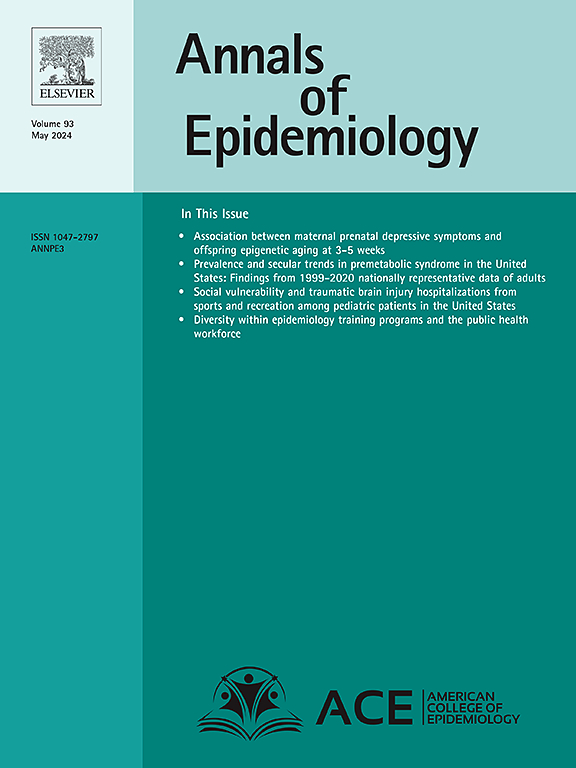创新流行病学指导促进职业治疗博士生人群健康思维。
IF 3.3
3区 医学
Q1 PUBLIC, ENVIRONMENTAL & OCCUPATIONAL HEALTH
引用次数: 0
摘要
目的:最近转向以人口为基础的卫生保健和健康科学培训计划的研究对减少健康差距至关重要,尽管学生需要在这方面加强教育。本研究旨在确定创新的流行病学研究指导是否与职业治疗博士生提高科学素养技能有关,科学素养技能是人口健康课程的核心目标。方法:我们使用科学素养技能测试(TOSLS)来确定学生科学素养技能的变化,这是基于基线成绩的变化。多水平重复测量模型按学生和队列进行聚类,并根据人口统计学和先前的研究课程进行调整。结果:样本包括166名学生(91%女性,57%非西班牙裔白人,14%西班牙裔,19%非西班牙裔黑人,10%亚裔;83%≤25岁)。模型估计显示,相对于基线,科学素养技能有所提高(β=0.39 [95%CI:0.10, 0.67])。交互模型显示,西班牙裔学生(β=0.82 [95%CI:0.10, 1.63])和非西班牙裔白人学生(β=0.55 [95%CI:0.16, 0.94])较基线有更大的改善。其他交互模型没有显示出学生因素在时间- tosls关联方面的差异。结论:创新性流行病学研究教学是支持健康科学学生科学素养技能发展的一种合适方法,可促进人口健康思维、研究和实践。本文章由计算机程序翻译,如有差异,请以英文原文为准。
Innovative epidemiology instruction for promoting population health thinking in occupational therapy doctoral students
Purpose
Recent shifts toward population-based health care and research in health science training programs are vital to reducing health disparities, although students need stronger education in this area. This study aimed to determine if innovative epidemiology research instruction is associated with improved science literacy skills, a core objective of population health curricula, for occupational therapy doctoral students.
Methods
We used the Test of Scientific Literacy Skills (TOSLS) to determine change in student science literacy skills based on change in performance from baseline. Multilevel repeated measures models were run clustering by student and cohort, adjusted for demographics and prior research courses.
Results
The sample included 166 students (91 % female, 57 % Non-Hispanic White, 14 % Hispanic, 19 % Non-Hispanic Black, 10 % Asian; 83 % ≤25 years old). Model estimates showed improvements in science literacy skills (β=0.39 [95 %CI:0.10, 0.67]) relative to baseline. Interaction models showed greater improvements from baseline for students who identified as Hispanic (β=0.82 [95 %CI:0.10, 1.63]) and Non-Hispanic White (β=0.55 [95 %CI:0.16, 0.94]). Additional interaction models did not show differences in the time-TOSLS association by student characteristics.
Conclusions
Innovative epidemiology instruction may be an appropriate method for supporting health sciences student development of science literacy skills to foster population health thinking, research, and practice.
求助全文
通过发布文献求助,成功后即可免费获取论文全文。
去求助
来源期刊

Annals of Epidemiology
医学-公共卫生、环境卫生与职业卫生
CiteScore
7.40
自引率
1.80%
发文量
207
审稿时长
59 days
期刊介绍:
The journal emphasizes the application of epidemiologic methods to issues that affect the distribution and determinants of human illness in diverse contexts. Its primary focus is on chronic and acute conditions of diverse etiologies and of major importance to clinical medicine, public health, and health care delivery.
 求助内容:
求助内容: 应助结果提醒方式:
应助结果提醒方式:


